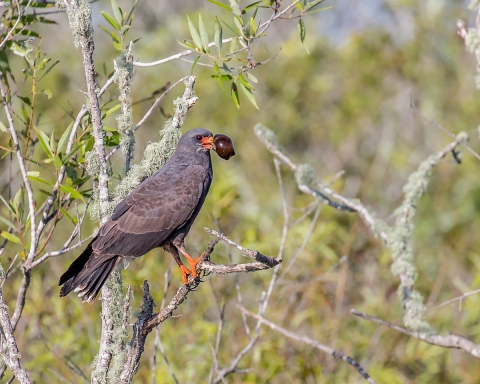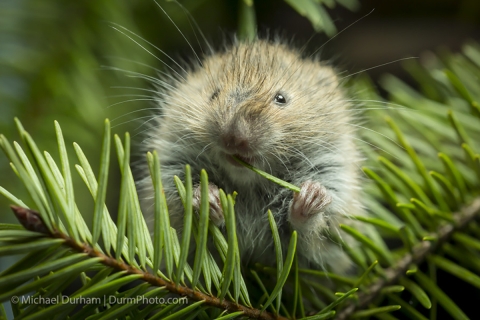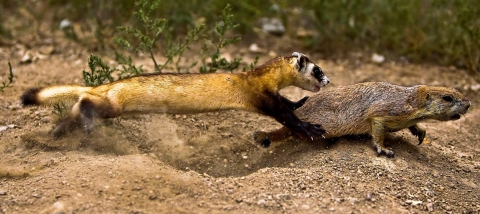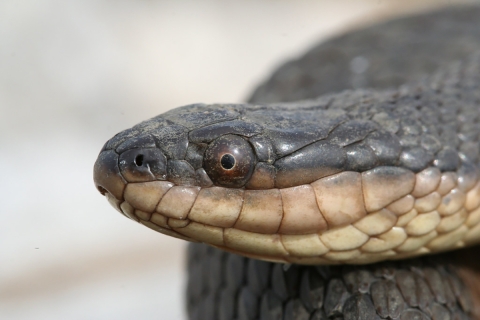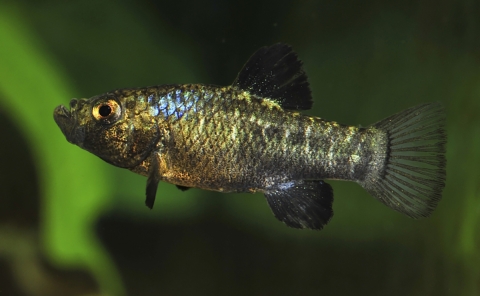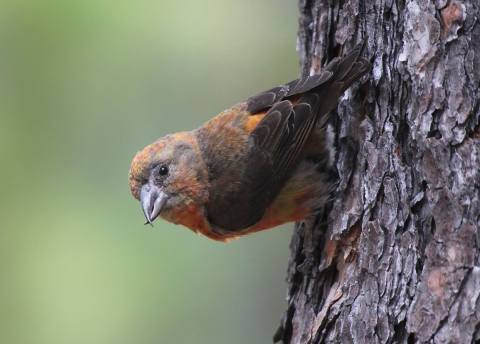You think your kids or friends are picky eaters? Wait until you read about the specialized diets of these species. Wild animal specialists rely on a particular food or habitat for survival. This strategy is wonderful when the food or habitat is abundant, but can be detrimental if those resources become scarce. This is why we do our best to ensure vulnerable species have the food and habitat they need to survive.
Everglade Snail Kite
The endangered Everglade snail kite's diet is almost exclusively made up of apple snails. As you can imagine, this makes the management of apple snail populations critical to the recovery efforts of snail kites in Florida.
Red Tree Vole
These highly specialized critters live in tops of old growth Douglas-fir trees. Their only source of food is Douglas-fir needles. The needles also provide water (in the form of dew) to the tiny critters. As a result, Douglas-fir trees play a major role in sustaining red tree vole populations.
Valley Elderberry Longhorned Beetle
Adult valley elderberry longhorned beetles eat the nectar, flowers, and leaves of elderberry bushes. Eggs are laid on elderberries, and larvae live inside the stems before emerging as adults.
Black-footed Ferret
Black-footed ferrets are predators that depend on prairie dogs for more than 90% of the their diet. Loss of habitat and prey are two threats that have led black-footed ferrets to the endangered species list.
Graham's Crayfish Snake
As you may have guessed by their name, Graham's crayfish snakes feed primarily on freshly molted crayfish.
Osprey
While most fish-eating birds of prey skim the surface, plucking fish from the water, osprey can submerge themselves completely to catch a fish. They will eat other foods, but fish make up about 99% of their diet.
Monarch Butterfly Larvae
Monarch butterflies lay their eggs on milkweed plants. Why is that? As it turns out, monarch larvae (caterpillars) feed exclusively on the leaves of milkweed plants. Therefore, to save the monarch butterfly, we need to work together to plant milkweed!
Lepidophages
This is a group of fish species specialized to feed on scales they pluck from other fishes. Though it takes a great deal of energy to attack for scales, they're a nutritional food source.
Red Crossbill
The unusual shape of a red crossbill's bill is adapted to get at seeds protected under the scales of pinecones (its primary food source). Crossbills are able to reach seeds that are not accessible to other species.

